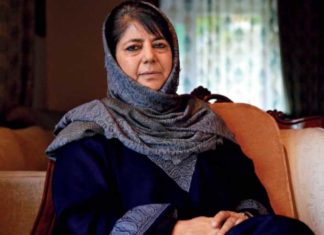New Delhi, Feb 25, 2021-
India, the largest producer of cotton, is yet to cash in on US ban on imports of the yarn from China. Reason? Price rise in the domestic market.
A US ban on Chinese cotton along with an increase in demand for the yarn from Beijing has pushed domestic prices. Not only is this impacting export, but domestic users including apparel manufacturers are also reeling under pressure. Earlier, many projected a “much higher cotton exports” from India after the US ban.
“Indian cotton is no longer the cheapest in the world as price of our cotton has increased from Rs 38,000 per candy of 356 kg each to Rs 41,500, while the international prices have declined by about 4 per cent,” the Economic Times quoted Atul Ganatra, president Cotton Association of India (CAI) as saying.
The CAI revised export estimates downward by 10 per cent to 5.4 million bales of 170 kg for the current financial year downward by 10 per cent. In the previous year, India exported of 5 million bales of 170 kgs.
In early January, price of raw cotton touched Rs 5,700 a quintal against the minimum support price of Rs 5,515 fixed for this season.
In addition to price rise, resurgence of the deadly coronavirus also has hit exporters’ prospects.
Earlier, the US banned imports of Chinese cotton due to human rights violations against Uighur Muslims in the Xinjiang region.
Sources said that the industry must focus on maintaining the right price. “If you look at rice, pricing has helped India take advantage of the current situation and we have become the largest supplier of the grain in the world. But in case of cotton, we are facing a handicap,” an analyst on condition of anonymity said.
Impact of price hike on domestic users
The apparel and garment manufacturers — about 90 per cent-are still small and medium scale-have faced the maximum brunt and are rapidly losing out to other markets including Bangladesh and Vietnam.
Animesh Saxena, president, Federation of Indian Micro and Small and Medium Enterprises (FISME) told India Narrative that India’s apparel sector has not witnessed much growth.
“We have been hit badly by the price hike of cotton in the domestic market, competitiveness is becoming an issue,” Saxena said.
In fact, this year’s Economic Survey not only highlighted the success story of Bangladesh but also said that India must learn from its neighbour.
The survey authored by KV Subramanian, chief economic adviser in the finance ministry, pointed out that the top five commodities — mainly pertaining to textiles, apparels and footwear — exported by Dhaka, account for more than 90 per cent of Bangladesh’s total exports since 2015. These sectors are “highly labour-intensive and employs unskilled and semi-skilled labour.”
“In case of India, on the other hand, export performance is more broad-based as the top five export commodities jointly contribute around 40 per cent of total exports,” the survey said, adding that these comprise capital and technology-intensive goods.
An analyst said that unless India chalks out a well thought out strategy to support this sector, the going will become even tougher. (Agency)





































































